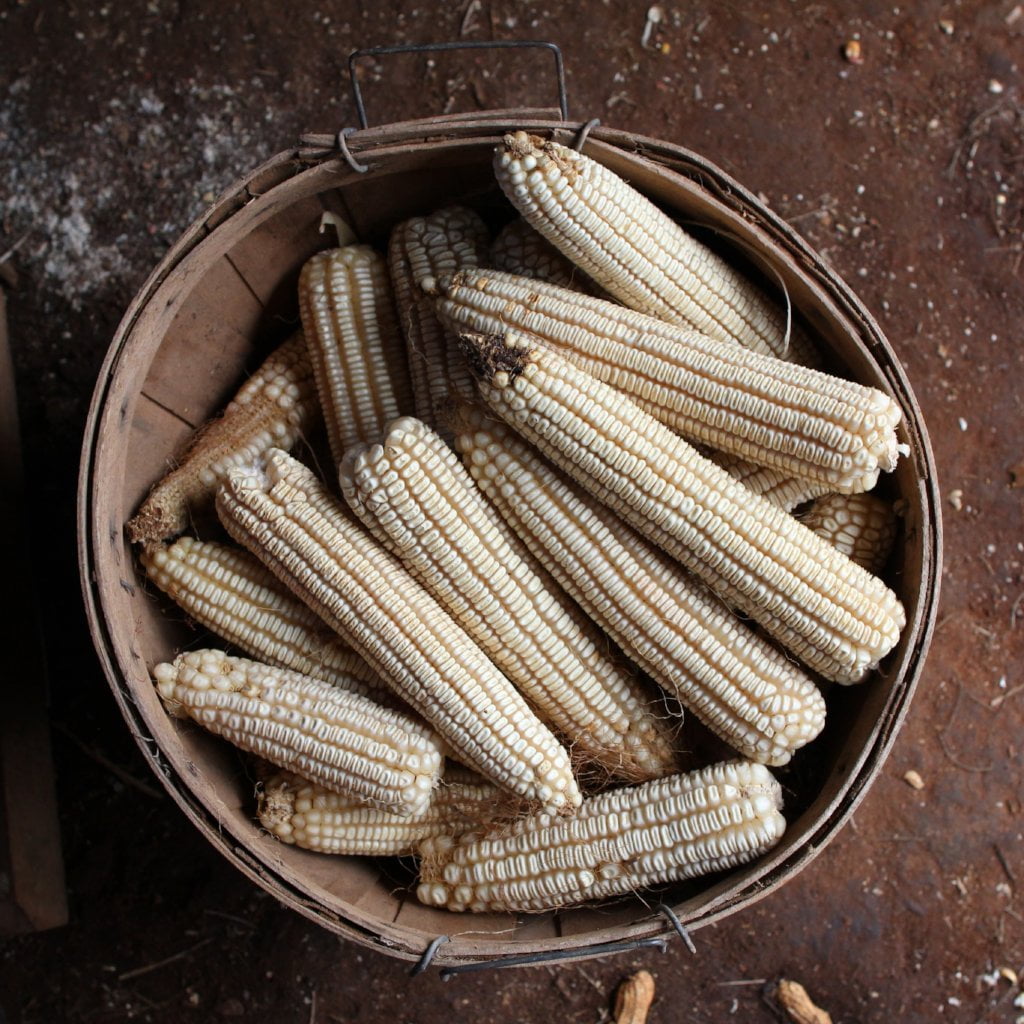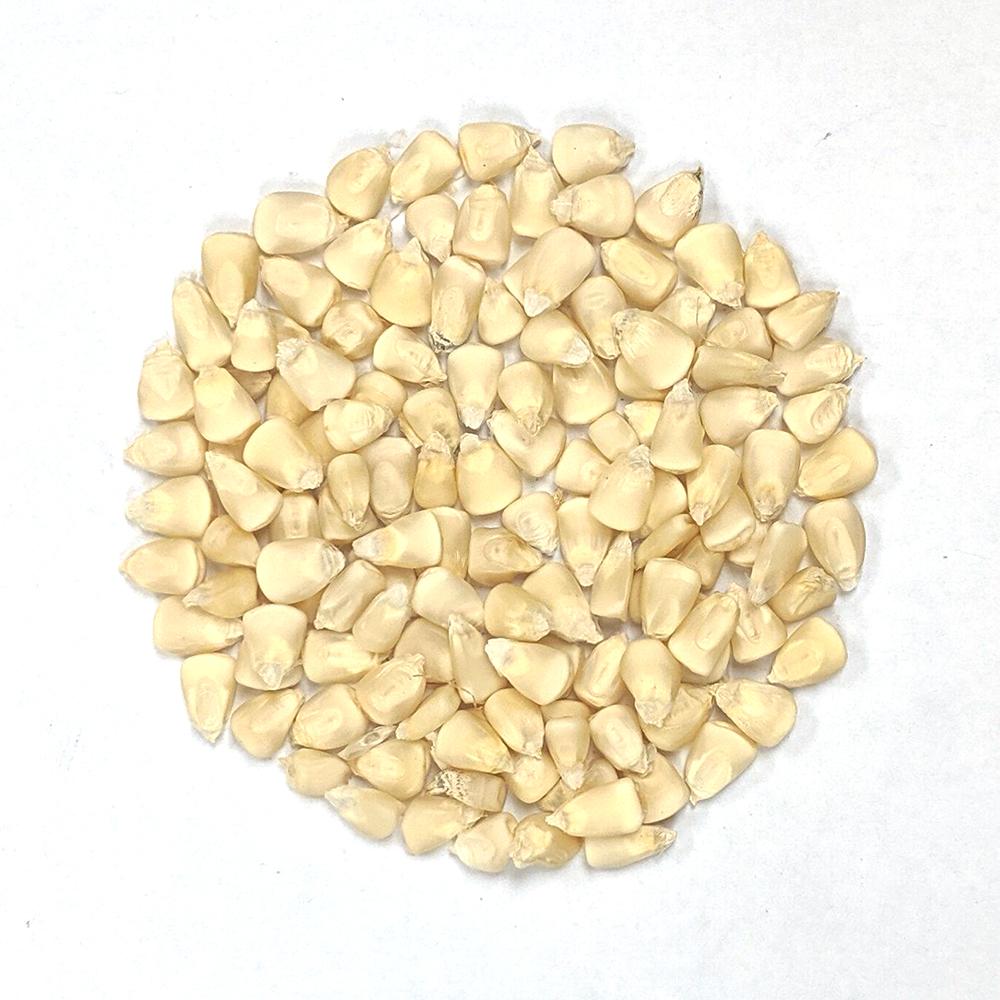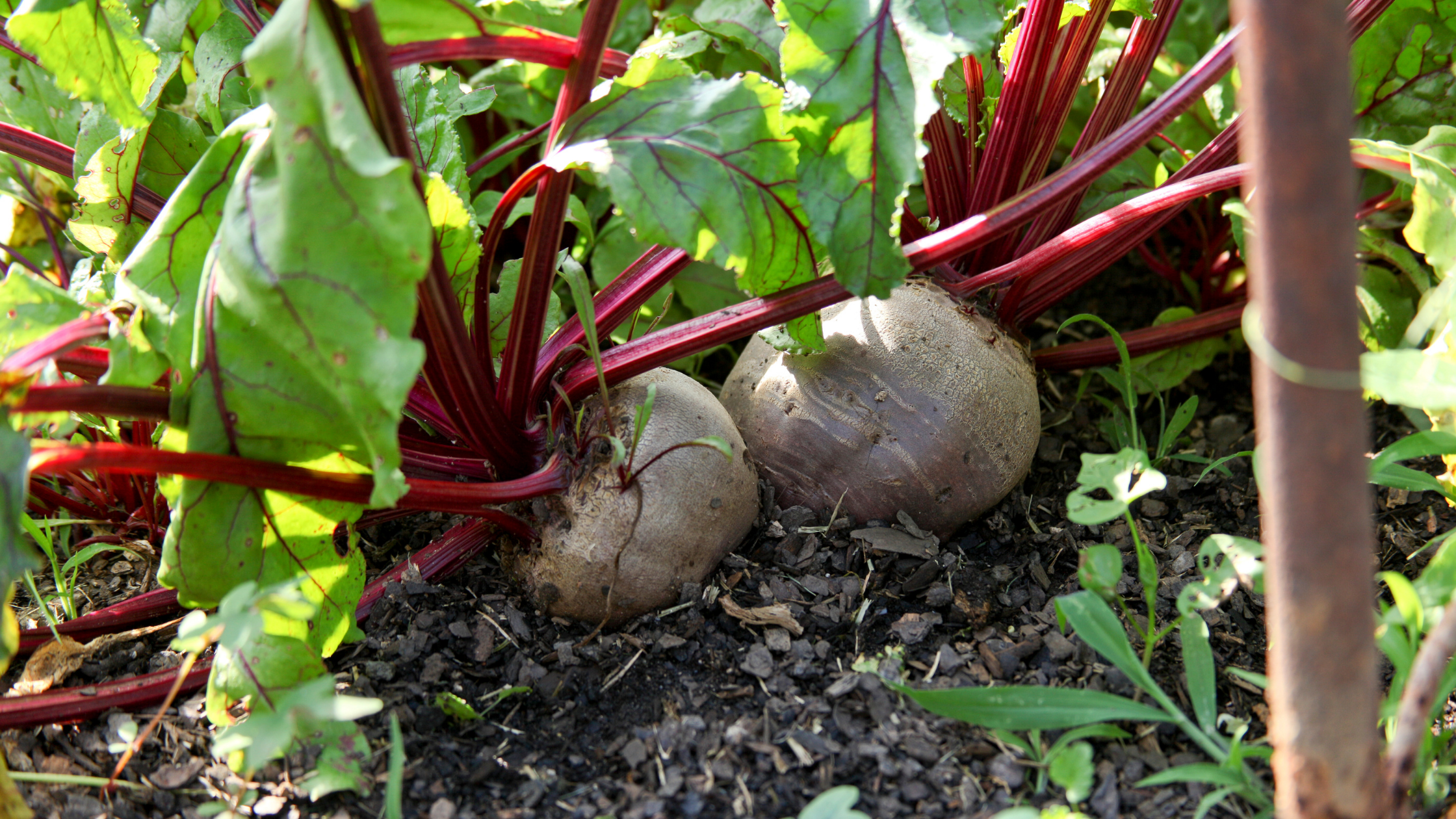Sow True Seed: Our Generative AI Policy
Sow True Seed will never use generative AI in any art, copywriting, blog posts, or advertisements of any kind. Our human-first business will continue to be just that - human...
Fresh new look, same great seeds - read all about our brand refresh on our blog!
Free Shipping on All Orders - All December Long!


HEIRLOOM. What was once one of the most cultivated corn varieties in the South because of its reliably high yields and excellent flavor is now back and ready for you to enjoy and save yourself! We hope you will join us in bringing this historic corn back into the spotlight it deserves. It produces at least two good-sized ears of heavy, white-kerneled corn, perfect for cornmeal and hominy.
Thought to be extinct for decades, Cocke’s Prolific corn was rediscovered in Inman, SC by then Sow True Seed manager, Angie Lavezzo. After some historical digging and verification by food historian Dr. David Shields, we are very proud to be reintroducing this variety to the public for the first time since 1951. This corn was stewarded by Mr. Manning Farmer on his land in the Dark Corner region of South Carolina for most of his 99 years. First grown by his uncle and his father, Mr. Farmer had been growing and keeping this seed pure since the 1940's, and we are very grateful to him for it.
Cocke's Prolific was developed by John Hartwell Cocke, who was a proficient and prolific agriculturalist in the first half of the 1800’s. Many of his breeding projects made their way to his friend Thomas Jefferson, who grew them (including the Cocke's Prolific corn) at Monticello. While this corn was grown widely after its introduction, the descendants of John Hartwell Cocke that we've spoken with report that it didn't reach legendary status until his enterprising daughter, Lucy Cocke realized that she could market it as high quality horse feed. This made her a very wealthy woman and helped launch this fantastic corn into fame. It is now thought that all modern dent corns have roots in Cocke's Prolific gene stock as it was so popular as a parent plant. Modern hybrids and the odd shift towards primarily yellow dent corn contributed to this variety becoming almost completely extinct.
Packet weight - 1/4 lb - packet contains about 240 seeds.
SMALL FARM GROWN by Four Sisters Farm in Raleigh, NC
Voted into the Slow Foods Ark of Taste for 2019!
Minimum Seeds per Packet: 240
Packet Weight: 1/4 lb
Planting Season: After Last Frost
Sowing Method: Direct Seed
Seed Depth: 1"
Direct Seed Spacing: 3"
Soil Temperature: 65-85 ℉
Days to Sprout: 7-10
Mature Spacing: 8-12"
Sun Requirement: Full Sun
Frost Tolerance: Frost Sensitive
Days to Harvest: 115
Corn should be direct-seeded into the garden after your last frost date. It will germinate best in soils that are 65 degrees Fahrenheit. When deciding the best time to plant, be sure to check the days to harvest information for your variety, as many varieties need a long season.
Choose a spot with full sun and well-draining soil. Corn will have to be planted in a block to ensure consistent germination, rather than planting in rows like you would for other crops. You’ll have to grow at least a 3x3 block at minimum. Choose a spot where this planting method will be suitable.
Corn is one of the few crops that will cross pollinate in the first generation, meaning that they can present genetics of different corn varieties in the first season. It’s not uncommon for popcorn and sweet corn to cross, resulting in not-so-tasty sweet corn and unpoppable popcorn. For this reason, you’ll have to be mindful of what other corn is being grown by your neighbors. However, if you’d like to grow multiple varieties - no problem! Simply time them by planting them two to three weeks apart so that they are tassling (pollinating) at different times.
Plant seeds ½ to one inch deep and three inches apart. Ensure that rows are at least 12 inches apart. As the seeds germinate and grow (typically once they reach four to six inches tall), they can be thinned to eight to 12 inches. Once they’re about 12 inches tall, fertilize them with a high nitrogen fertilizer.
Harvesting corn is different depending on what type you’re growing. Sweet corn is usually ready about three weeks after the plants tassel. Keep a close eye on your corn patch as the ears grow. The harvest window for sweet corn is usually just a couple of days. Test for ripeness by peeling back the husk and puncturing a kernel with your fingernail. If the juice that comes out is white, the ear is ready! If it’s clear - it hasn’t quite reached its peak yet.
Dent, flint, and popcorn ears should be left on the plant until the husks have turned completely brown. Ideally you can leave them on the plants until they are completely dry, but if you have lots of rainy weather predicted for the late summer or early fall, it may be best to bring the ears indoors so they can dry.
Corn (Zea mays) is wind-pollinated, so it can be tricky to prevent cross-pollination. A mile of separation is recommended for crops that are tasseling/silking at the same time with no barriers in between them. If your property is surrounded by windbreaks like trees or tall buildings, such distant separation is probably not necessary. Isolation can also be achieved by timing your plantings so that corn of one variety is finished being pollinated by the time the next variety begins tasseling. Or, if you can’t be sure of isolation any other way, you can place bags over the shoots (developing ears) you want to save, and hand-pollinate them when the silks emerge. Sow True carries corn shoot and tassel bags in our garden supplies section. Corn seeds will only be viable if left on the plant to mature completely. The husks should be completely brown before harvesting corn for seed. Make sure you allow the ears to dry down completely before shelling the kernels off the cobs, and storing the seed in an airtight container in a cool, dark, and dry location.
Sow True Seed will never use generative AI in any art, copywriting, blog posts, or advertisements of any kind. Our human-first business will continue to be just that - human...
Brussels Sprouts can be grown in all areas of the United States. Their long time to maturity and sensitivity to nutrient imbalances have given them a reputation for being difficult....
Sometimes with beets it seems that people love them or… don’t love them. But we are of the belief that if you think you don’t love beets - you just...



